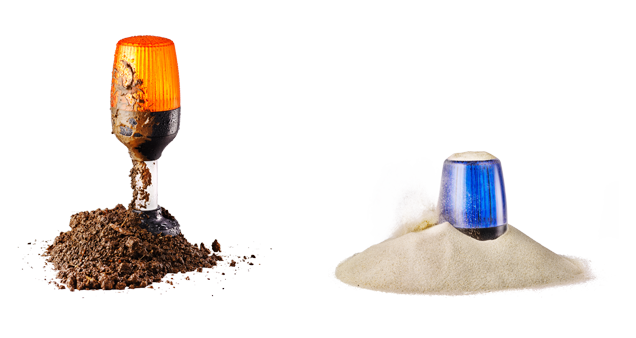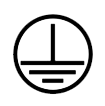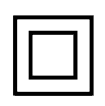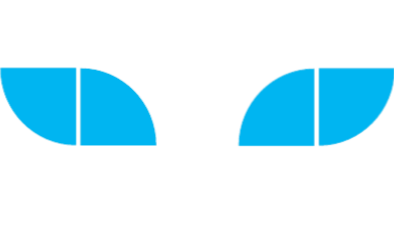IP ratings explained
About Auer Signal
Auer Signal is a global leading manufacturer of signaling technology, operational in 70+ countries. The company produces stack lights, visual-, audible-, visual-audible and explosion proof signaling devices.
Discover Signaling Devices NOW!What is an IP rating?
The IP rating provides information about the resistance of an electrical device against solid objects and liquids. Many electrical devices, such as signaling devices from Auer Signal, are exposed to a wide variety of environmental conditions for many years. These include outdoor applications such as marine or vehicle applications and indoor applications such as industrial manufacturing. The IP rating indicates whether the device is suitable for the environmental conditions of the desired application.

The most common degrees of protection for Auer Signal products are IP65, IP66 and IP67. The degree of protection of our signal devices can be found on our website under the technical data of the respective product. They are also marked with the symbol below and the corresponding IP code on the website.

WHAT DOES THE IP STAND FOR?
The abbreviation IP stands for International Protection, but is often colloquially referred to as Ingress Protection. Next to the abbreviation IP there are two numbers, the so-called IP Code. Each digit stands for a certain degree of protection against the ingress of foreign bodies, contact or water.
Which IP standards exist?
The criteria of the IP codes are defined in two standards:
- IEC 60529
- ISO 20653
The international standard IEC 60529 is the basis for the definition of the "degrees of protection provided by enclosures", the so-called IP codes. The ISO 20653 standard deals primarily with the degrees of protection for vehicles. In addition to the numbers, the IP codes of the ISO standard sometimes also include the letter "K", which indicates a difference in the test specification to IEC 60529. For example, IPx9 (IEC 60529) and IPx9K stand for "protection against liquids during high-pressure cleaning and steam jet cleaning", but the specification is slightly different.
ARE THERE DIFFERENT DEGREES OF PROTECTION AROUND THE WORLD?
Although ISO 20653 is an internationally valid standard for IP ratings, other standards for protection classes are gaining acceptance in some countries. The ISO standard was created by the International Electrotechnical Commission (IEC) and is specified in Europe and Asia.
In the United States, Canada and Mexico, the American standard NEMA 250 is widely used for the protection of enclosures for electrical equipment.
The NEMA 250 standard contains 13 different degrees of protection, which cannot be converted one-to-one to the IP codes of the ISO or IEC standard. The IP rating is therefore not equivalent to the NEMA standard, which also takes into account other factors such as corrosion resistance or the mechanical load of an enclosure.
The NEMA test procedure is also a basic requirement for UL certification. The UL mark has a similar status in the USA as the CE marking in Europe.
What do the digits after “IP” mean?
The degrees of protection are indicated by an abbreviation consisting of the two unchanging letters I and P and two digits for the degree of protection. The first digit stands for protection from solid objects or materials. The second digit provides information about protection against moisture or liquid.
If one of the two digits is not given, for example because it is not known or necessary, this missing digit is replaced with an X (e.g. IPX6).
The IP code breakdown below gives an overview of the meaning and composition of the IP codes. Strictly speaking, the term IP rating is incorrect, as the term protection class has its own meaning in relation to electrical equipment. However, the addition "IP" makes it clear to most experts that the IP ratings are meant.
Code breakdown:
First digit | Meaning | ||
| ISO 20653 | IEC 60529 | Protection against touch/contact | Protection against solid objects |
| 0 | 0 | No protection No special protection of persons against direct contact with active or moving parts | No protection No protection of the equipment against ingress of solid foreign bodies |
| 1 | 1 | Protection against contact with large surfaces (e.g. hand contact) | Protection against large foreign bodies (∅ ≥ 50 mm) |
| 2 | 2 | Protection against contact with the finger | Protection against medium-sized foreign bodies (∅ ≥ 12 mm) |
| 3 | 3 | Protection against contact with tools and wires | Protection against small foreign bodies (∅ ≥ 2,5 mm) |
| 4 | 4 | Protection against contact with fine tools and small wires | Protection against granular foreign bodies (∅ ≥ 1 mm) |
| 5K | 5 | Complete protection against accidental contact | Protection against dust deposits inside (dust protected) |
| 6K | 6 | Complete protection against accidental contact | Protection against dust ingress (dust-tight) |
Second digit | Meaning | |
| ISO20653 | IEC60529 | Liquid ingress protection |
| 0 | 0 | No protection against liquid ingress |
| 1 | 1 | Protection against dripping water (vertical) Drops of water falling vertically shall have no harmful effect |
| 2 | 2 | Protection against dripping water (oblique) Drops of water falling at any angle up to 15 degrees from the vertical shall have no harmful effect |
| 3 | 3 | Protection against spray water Drops of water falling at any angle up to 60 degrees from the vertical shall have no harmful effect |
| 4 | 4 | Protection against splash water Water splashed against the equipment from all directions must not have any harmful effect |
| 4K | Protected against splash water with increased pressure on all sides | |
| 5 | 5 | Protection against water jets A water jet (nozzle) from any angle shall have no harmful effect |
| 6 | 6 | Protection against strong water jets Water must not penetrate the equipment in harmful quantities during temporary flooding |
| 6K | Protected from strong jets of water at elevated pressure | |
| 7 | 7 | Protection against immersion Water must not penetrate in harmful quantities when the equipment is immersed in water under the specified pressure and time conditions (up to 1 meter depth for 30 minutes) |
| 8 | 8 | Protection against permanent immersion Water must not penetrate in harmful quantities if the equipment is permanently immersed under water (more than 1 metre deep) |
| 9 | Protection against water during high-pressure cleaning and steam jet cleaning | |
| 9K | Protection against water during high-pressure cleaning and steam jet cleaning for road vehicles | |
Which IP rating is suitable for outdoor applications?
For the universal use of signalling devices for outdoor applications, we recommend a protection class of at least IP65. Most of Auer Signal's signal lights and signaling devices fulfil the IP65 and IP66 protection classes and are therefore readily suitable for outdoor applications. Devices with this degree of protection are dust-tight and can withstand moisture, rain and water in large quantities.
Whether a higher protection class is required in a special case depends on further environmental conditions. In special climatic conditions such as high humidity, ice, strong temperature fluctuations or the formation of condensation, a higher protection rating may well be required.
In comparison, a conventional socket outlet for outdoor use requires a protection rating of at least IP44.
WHICH AUER SIGNAL DEVICES ARE USED FOR OUTDOOR APPLICATIONS?
Most of our signaling devices have a high IP rating of IP65 or IP66 and are therefore suitable for outdoor use.
Our highly resistant P and N series are used on cranes, among other things, where they are exposed to extreme weather conditions.
The ASML multi-tone sounder with an IP rating of IP66 is suitable for maritime applications, since in addition to the high protection class, stainless steel screws are installed in the device. Thus, the sounder withstands even contact with seawater.
In addition to the A Series acoustic signaling devices, the Q Series lights are also popular when it comes to the use of outdoor lights. Traffic light systems with two or three Q Series lights regulate traffic in front of entrance gates or barriers. With the IP rating IP66, the devices are ideally suited for this purpose. However, the series Q is also used in special environmental conditions such as a coal mine, where the units are exposed to high levels of dust.
Which IP ratings do I need for indoor applications?
For indoor signaling device applications, the respective environmental conditions must be taken into account. In principle, IP43 is sufficient for universal applications in factories and buildings. However, if the environment is exposed to a large amount of dust or foreign bodies such as chips in a carpentry workshop, we recommend IPX6.
If there is a possibility that the signal device may come into contact with water or steam during indoor use, such as in a kitchen, greenhouse or through a sprinkler system, IP64 rating is advisable.
WHICH AUER SIGNAL DEVICES ARE SUITABLE FOR INDOOR USE?
Auer Signal small horns are among the classic examples of indoor applications. They are used in garages and car parks, among other places, to warn against dangerous exhaust fumes. The optical-acoustic combinations of the K+H series are IP43 protected and therefore ideally suited for indoor applications.
Signal towers as well as panel-indicator lights and buzzers are primarily used for indoor applications. In most cases, however, this is not due to the IP ratings, but to the type of application. Our signal towers, such as PC7 or CT5, have IP66, IP67 and IP65 and would therefore also be suitable for outdoor applications. In most cases, however, they are used indoors, on machines or in shops.
The same applies to our panel mount products like our panel mount buzzers. These devices are particularly suitable for use in control cabinet construction or industrial automation and are therefore rarely used outdoors. These devices, such as our M22 series, are also suitable for outdoor use due to their high IP65 protection rating.
Examples of common IP ratings
WHAT DOES THE IP RATING IP20 MEAN?
Products with the IP rating IP20 are protected against solid foreign bodies with a diameter of 12mm or more and against contact with fingers. These products are not protected against the penetration of water.
WHAT DOES THE IP RATING IP44 MEAN?
Electrical devices with with the IP rating IP44 are protected against solid foreign bodies (∅ ≥ 1 mm) and splash water from all directions. This degree of protection is recommended for outdoor sockets.
WHAT DOES THE IP RATING IP54 MEAN?
If a product has the IP rating IP54, it is protected against dust deposits and contact. Splash water from all directions also does not penetrate into the inside of the housing.
WHAT DOES THE IP RATING IP55 MEAN?
Electrical devices with IP rating IP55 are protected against dust deposits and water jets from any angle.
WHAT DOES THE IP RATING IP65 MEAN?
Electrical devices with the IP rating IP65 are protected against dust ingress and contact. The housing protects the inside of the device against water jets from any angle. The M22 series from Auer Signal have the IP rating IP65 and, on request, as a pre-wired model, they can have the IP rating IP67.
WHAT DOES THE IP RATING IP66 MEAN?
The IP rating IP66 stands for complete protection against accidental contact and is dust tight. The housing protects the interior from strong jets of water. Most of our signaling devices have the IP rating IP66. These products are suitable for both indoor and outdoor applications.
WHAT DOES THE IP RATING IP67 MEAN?
Signal devices with the IP rating IP67 are dust tight and protected against contact. In addition, no water can penetrate the housing when temporarily submerged (up to 1meter depth for 30 minutes).
Signal lights of our P series - the Tough with the IP ratings IP67 and IP66 are convincing in extreme applications in dust, ice, rain and heat.
The N series - the Performer is also specially designed for outdoor use and have the IP ratings IP65 and IP67.
WHAT DOES THE IP RATING IP68 MEAN?
Electrical devices with the IP rating IP68 are dust-tight and protected against permanent immersion. Devices with this degree of protection are suitable for use under water, for example, for pool lighting.
WHAT DOES THE IP RATING IP69 MEAN?
The IP69 protection rating means that a device is fully protected against the ingress of dust and against contact. According to the IEC 60529 standard, the number 9 stands for protection against water from high-pressure cleaners or steam jet cleaning. This IP protection rating corresponds to the highest protection class.
WHAT DOES THE IP RATING IP69K MEAN?
In contrast to the IP69 rating, the IP69K rating applies to devices that are designed for use in vehicles according to ISO 20653 and must therefore withstand additional shocks and vibrations. Devices with an IP69K rating are guaranteed to be protected against both dust and water.
WHAT DOES THE IP RATING IPX4 MEAN?
The IP rating IPX4 means that a device is protected against water spray from all directions. The X is a placeholder because the IP code for protection against contact and foreign bodies is not known.
WHAT DOES THE IP RATING IPX7 MEAN?
The IP rating IPX7 stands for protection when temporarily submerged (up to 1meter depth for 30 minutes). The X stands for the unknown degree of protection. In principle, however, if the degree of protection against water is high, this degree of protection also protects against the penetration of foreign bodies or contact.
How does an IP rating test work?
Auer Signal tests and checks all signal devices in its own test laboratory. Our laboratory and our test equipment are tested once a year by the TÜV. This ensures that our systems comply with standards and that the test results meet the IP protection class standards.
The most important components for the IP rating test are an electrical turntable on which the signal device is mounted. The speed of the turntable can be adapted to the test criteria. Also necessary is a calibrated water pump that delivers the required litres per minute. Depending on the test procedure, certain blasting nozzles with different diameters are used.
In addition to conducting IP rating tests, Auer Signal is certified for the UL Hosedown Test, which is required for the American NEMA protection rating.
Our trained and certified testing staff adheres to all necessary standards for testing in accordance with the standards.
What is the difference between IP ratings and protection classes?
The terms IP rating and protection class must be distinguished from each other. We like to talk about the protection class, when actually the IP rating is meant. The protection class, however, refers to the measures that are taken with electrical devices to protect against dangerous voltages. The IP rating provides information about the degree of protection against the ingress of solid objects or materials and liquids.
WHAT ARE THE PROTECTION CLASSES?
There are four protection classes, from protection class 0 to protection class 3. Devices with protection class 0 have the lowest protection because they do not have any protective measures against electric shock. Devices with protection class 3 are secured with safety extra-low voltages or protective extra-low voltages and represent the highest protection class.
The table below gives an overview of the protection class symbols and their meaning.
| Protection class | Meaning | Symbol |
| 0 | Basic insulation is given, but no other protection. | |
| 1 | A protective earth conductor is present in the equipment. In the case of movable equipment, the protective earth conductor is installed in the plug. |  |
| 2 | Double or reinforced insulation is given as protection between the mains circuit and the output voltage. There is no connection to the protective conductor. |  |
| 3 | The unit is protected by a safety extra-low voltage (SELV/PELV). A safety transformer according to DIN VDE 0570-2-6 / EN 61558-2-6 is required. |  |





 ()
()
